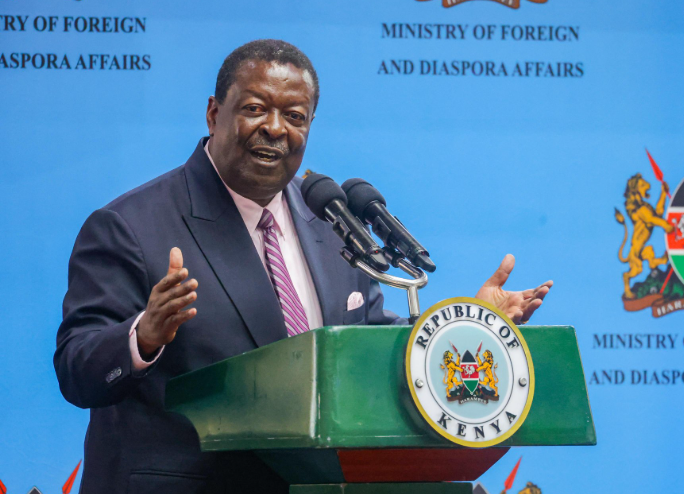Revealed: Over 5,000 Kenyans are living in Ethiopia as refugees

Over 5,000 Kenyans are living in Ethiopia’s Dilo and Magatho regions are refugees, the government has revealed.
Appearing before the Senate on Wednesday, April 2, 2025, Prime Cabinet Secretary Musalia Mudavadi disclosed that over 5,000 Kenyans moved to the neighbouring country due to ethnic conflict.
Quoting figures from the Department of Refugee Services, Mudavadi noted that 2,788 males and 2,883 females are living in Dilo and Magatho.
“The breakdown today, as of December 31, 2024, for the Dilo we have a total of 2,060, and in Magatho, 3,600. These now comprise 1,250 households and 5,671 individuals. Males are 2,788, females are 2,883, and children are 3, 385,” Mudavadi responded to a question which was raised by Marsabit County Senator Mohamed Chute.

How they were displaced
In his response, Mudavadi explained that the Kenyan, mostly Borana and Gabbra, moved to Ethiopia between 2005 and 2006 due to a territorial dispute, which culminated in the Turbi massacre.
Upon their arrival, they were welcomed in Ethiopia and have continued to live as refugees despite Kenya being a few kilometers away.

“Their displacement was triggered by a series of inter-ethnic conflicts in Marsabit County, particularly the conflict between Borana and the Gabbra ethnic groups over natural resources, grazing lands, contested and disrupted territorial boundaries and, of course, local political dynamics,” Mudavadi stated.
“Most of the refugees originate from the Marsabit County. Upon arrival in Ethiopia, support and protection was initially provided by the Borana clan in 2007. They registered by the Administration of Refugees Affairs of Ethiopia and UNHCR.
“According to the Department of Refugee Services, over 500 families of Kenyan origin living in Dilo and Magatho area of Southern Ethiopia ran away to seek asylum due to inter ethnic conflict in North Hor in 2,000. The conflict culminated in what came to be known as Turbi massacre,” he explained.
Efforts to repatriate them
Nonetheless, Mudavadi told the House that Kenya had engaged them in a bid to find a solution to bring them back to the country. He noted that some have expressed willingness to return, but prefer different locations for fear of being attacked again.
He told the lawmakers that the government will continue engaging them before finding a lasting solution.
He, however ruled out compensation upon their return.










